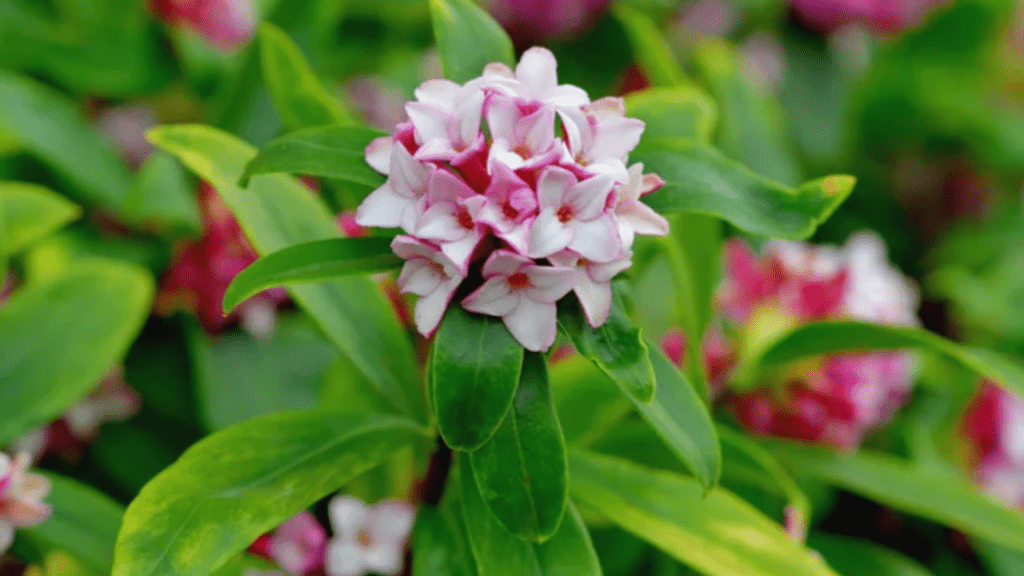
How to Cultivate a Healthy Daphne Plant in Your Garden
Daphne plants are known for their beautiful and fragrant flowers, making them a popular choice for gardeners looking to add a touch of elegance to their outdoor space. However, cultivating a healthy Daphne plant requires a bit of know-how and attention to detail. In this post, we’ll walk you through everything you need to know about caring for your Daphne plant, from the ideal growing conditions to the best practices for maintaining its health and beauty. Whether you’re a seasoned gardener or just starting out, these expert tips will help you cultivate a thriving Daphne plant in your garden.
Table of Contents
ToggleUnderstanding Daphne Plants
What Are Daphne Plants?
Daphne plants are a type of flowering shrub known for their beautiful and fragrant blossoms. They are often used in gardens to add a touch of elegance and charm. Daphne plants are typically small to medium-sized shrubs and are known for their evergreen leaves and clusters of small, colorful flowers. They are often grown for their ornamental value and can add a lovely scent to your garden. However, it’s important to note that while they are beautiful, Daphne plants are toxic if ingested, so it’s important to be cautious if you have pets or small children. To cultivate a healthy Daphne plant in your garden, it’s important to provide the right growing conditions, such as well-drained soil and partial shade. Regular watering and proper pruning are also essential for maintaining the health and beauty of your Daphne plant. With the right care and attention, you can enjoy the beauty and fragrance of Daphne plants in your garden.
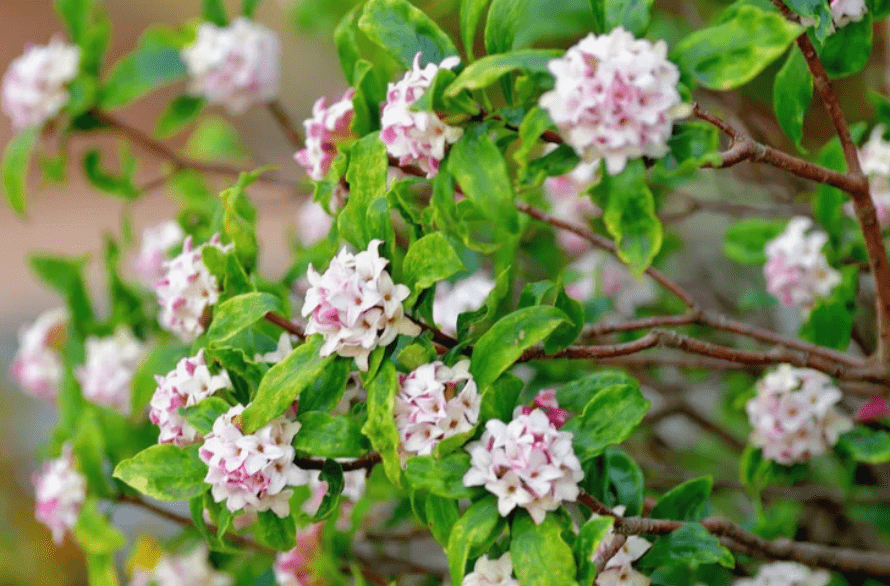
Selecting the Right Daphne Variety
Popular Varieties for Gardens
Detailed descriptions of common Daphne species suited for different climates.
When it comes to choosing the right Daphne species for your garden, there are several popular varieties to consider. The Daphne odora, also known as the Winter Daphne, is a popular choice for gardens in temperate climates. This species produces small, fragrant flowers in late winter or early spring. Another popular choice is the Daphne bholua, which is suited for colder climates and produces highly fragrant flowers in late winter. For warmer climates, the Daphne transatlantica is a good option, as it is more heat-tolerant and blooms throughout the summer. When selecting a Daphne variety, it’s important to consider the climate and growing conditions in your area to ensure that the plant will thrive. Additionally, it’s important to provide the right care and maintenance for your Daphne plant to ensure its health and longevity in your garden.
Considerations for Selection
Factors like climate, soil type, and garden design when choosing a variety.
When choosing a Daphne species for your garden, it’s important to consider factors such as climate, soil type, and garden design. The Daphne odora, also known as the Winter Daphne, is a popular choice for gardens in temperate climates. This species produces small, fragrant flowers in late winter or early spring. Another popular choice is the Daphne bholua, which is suited for colder climates and produces highly fragrant flowers in late winter. For warmer climates, the Daphne transatlantica is a good option, as it is more heat-tolerant and blooms throughout the summer. It’s important to select a variety that will thrive in the specific climate and growing conditions of your area. Additionally, providing the right care and maintenance for your Daphne plant is essential to ensure its health and longevity in your garden. By considering these factors, you can choose the right Daphne variety for your garden and enjoy its beauty and fragrance for years to come.
Planting Your Daphne
Choosing the Right Location
Importance of partial shade and well-drained soil.
When planting a Daphne plant, it’s important to consider the right location and growing conditions. Daphne plants require partial shade and well-drained soil to thrive. They prefer a location with morning sun and afternoon shade, as prolonged exposure to direct sunlight can cause their leaves to scorch. Additionally, Daphne plants are sensitive to waterlogged soil, so it’s important to ensure that the soil is well-drained to prevent root rot. When choosing a location for your Daphne plant, be sure to consider these factors to provide the best growing conditions for the plant. By selecting the right location and providing the proper care, you can enjoy the beauty and fragrance of your Daphne plant in your garden for years to come.
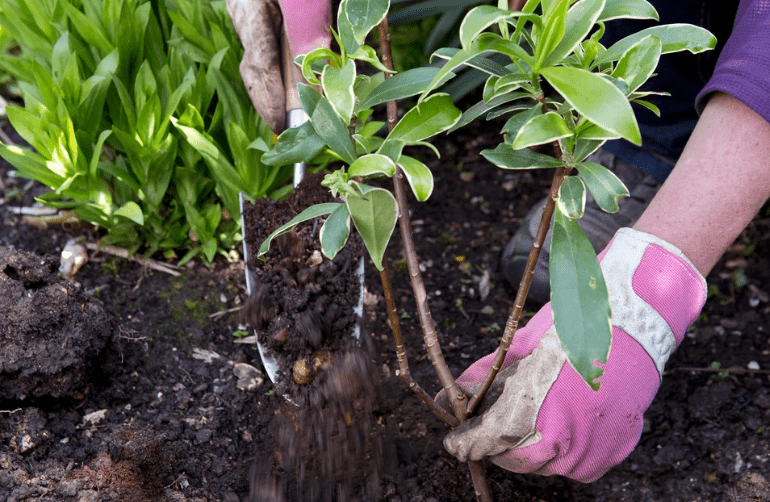
Soil Preparation
How to amend soil for optimal drainage and nutrient levels.
When it comes to planting a Daphne plant, choosing the right location and preparing the soil are key factors for optimal growth. Daphne plants thrive in partial shade and require well-drained soil to prevent root rot. To prepare the soil for optimal drainage and nutrient levels, you can amend it by adding organic matter such as compost or aged manure. This will help improve the soil structure and provide essential nutrients for the plant. Additionally, you can incorporate perlite or sand into the soil to enhance drainage. It’s important to test the soil pH and adjust it if necessary to create an ideal growing environment for the Daphne plant. By taking these steps to amend the soil, you can ensure that your Daphne plant has the best possible conditions for healthy growth and vibrant blooms.
Watering and Irrigation
How Often to Water Daphne
Establishing a watering schedule based on plant age and season.
When it comes to watering your plants, it’s important to establish a watering schedule based on the age of the plant and the season. For younger Daphne plants, it’s crucial to water them more frequently to help establish strong root systems. During the summer months, when the weather is hotter and drier, you’ll need to increase the frequency of watering to ensure the plants are receiving enough moisture. However, it’s important not to overwater, as this can lead to root rot and other issues.
As the plants mature, you can reduce the frequency of watering, as their root systems will have developed and they will be able to tolerate drier conditions. During the winter months, when the plants are dormant, you’ll need to reduce watering to prevent waterlogged soil and potential root rot.
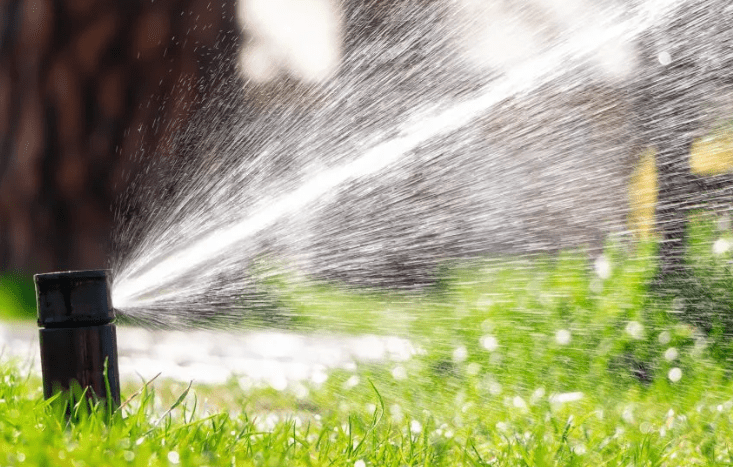
It’s also important to water the plants in the early morning or late afternoon to minimize evaporation and ensure that the water has a chance to be absorbed by the roots. By establishing a watering schedule based on the age of the plant and the season, you can ensure that your Daphne plants receive the right amount of moisture for optimal growth and health.
Best Practices for Irrigation
Techniques to ensure even moisture without waterlogging.
Watering your Daphne plants can be a little tricky, but with the right techniques, you can ensure even moisture without waterlogging. For younger plants, it’s important to water them more frequently to help establish strong root systems. During the hot summer months, you’ll need to increase the frequency of watering to ensure the plants are receiving enough moisture. However, it’s crucial not to overwater, as this can lead to root rot. As the plants mature, you can reduce the frequency of watering, as their root systems will have developed and they will be able to tolerate drier conditions.
During the winter months, when the plants are dormant, it’s important to reduce watering to prevent waterlogged soil and potential root rot. It’s also important to water the plants in the early morning or late afternoon to minimize evaporation and ensure that the water has a chance to be absorbed by the roots. By establishing a watering schedule based on the age of the plant and the season, you can ensure that your Daphne plants receive the right amount of moisture for optimal growth and health. Additionally, using a well-draining soil mix and adding mulch around the plants can help retain moisture and prevent waterlogging. With these best practices for irrigation, you can ensure that your Daphne plants thrive and stay healthy.
Mulching to retain moisture and protect roots.
Mulching is a great way to retain moisture and protect the roots of your plants. It helps to keep the soil cool and moist, which is essential for the health and growth of your plants. However, it’s important not to overwater, as this can lead to root rot. As the plants mature, you can reduce the frequency of watering, as their root systems will have developed and they will be able to tolerate drier conditions. During the winter months, when the plants are dormant, it’s important to reduce watering to prevent waterlogged soil and potential root rot. It’s also important to water the plants in the early morning or late afternoon to minimize evaporation and ensure that the water has a chance to be absorbed by the roots. By establishing a watering schedule based on the age of the plant and the season, you can ensure that your plants receive the right amount of moisture for optimal growth and health. Additionally, using a well-draining soil mix and adding mulch around the plants can help retain moisture and prevent waterlogging. With these best practices for irrigation, you can ensure that your plants thrive and stay healthy.
Fertilizing Daphne Plants
When and How to Fertilize
Best times of year to fertilize and the type of fertilizer to use.
It is important to fertilize your plants during the growing season, which is typically in the spring and early summer. This is when the plants are actively growing and can benefit the most from the nutrients in the fertilizer. You can use a balanced, slow-release fertilizer specifically formulated for flowering shrubs, such as a 10-10-10 or 20-20-20 fertilizer. It is important to follow the instructions on the fertilizer package to ensure that you are using the correct amount for your plants.
When applying the fertilizer, make sure to spread it evenly around the base of the plant and water it in well. This will help the plants to absorb the nutrients and promote healthy growth. It is best to avoid fertilizing in the fall and winter, as the plants are typically dormant during this time and do not need as many nutrients.
Overall, it is important to use the right type of fertilizer and fertilize at the appropriate times to ensure the health and growth of your Daphne plants.
Avoiding Over-Fertilization
Signs of nutrient overload and how to correct it.
Nutrient overload in plants can be identified by signs such as yellowing leaves, stunted growth, and burnt leaf edges. To correct this, it’s important to first stop fertilizing the plants to prevent further nutrient buildup. Next, you can flush the soil with water to help leach out the excess nutrients. You can also trim off any damaged or yellow leaves to help the plant redirect its energy towards healthy growth. It’s important to monitor the plant closely and adjust your fertilization schedule and amounts accordingly to prevent future nutrient overload. Remember to always follow the instructions on the fertilizer package and fertilize at the appropriate times to ensure the health and growth of your plants.
Pruning and Maintenance
Pruning Techniques for Healthy Growth
When and how to prune Daphne to maintain shape and health.
Daphne plants should be pruned in late spring or early summer after they have finished flowering. It’s important to prune them to maintain their shape and health. When pruning, make sure to remove any dead or damaged branches to encourage new growth. You can also lightly prune the plants to promote a more compact and bushy growth habit. It’s important to avoid heavy pruning as it can harm the plant. When pruning, use clean and sharp pruning shears to make clean cuts and minimize damage to the plant. It’s also important to remove any crossing or overcrowded branches to improve air circulation and prevent disease. Overall, regular pruning will help to maintain the shape and health of your Daphne plants and promote healthy growth.
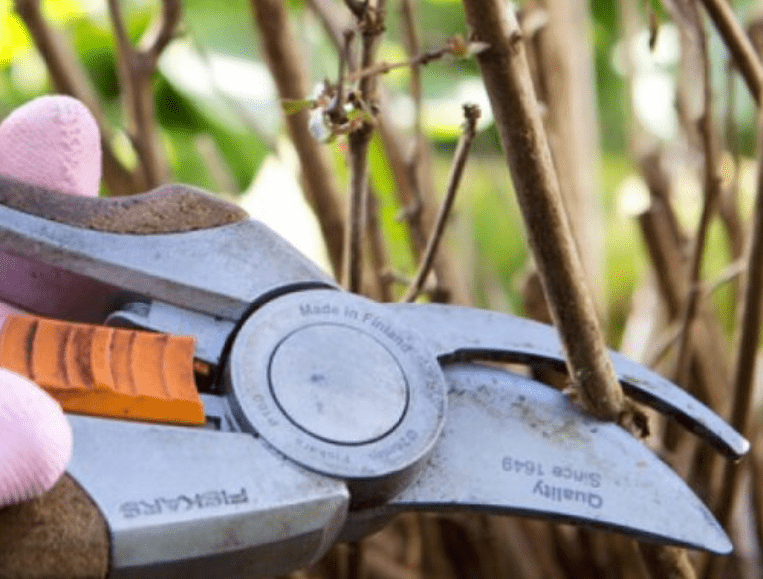
Routine Maintenance Tips
Regular care tasks like deadheading and weed control.
It’s important to regularly care for your plants, including tasks like deadheading and weed control. Deadheading, or removing dead or faded flowers, is important for the health and appearance of your plants. This encourages new growth and prolongs the blooming period. Weed control is also essential to keep your plants healthy and prevent competition for nutrients and water. When it comes to pruning, it’s important to maintain the shape and health of your plants. Make sure to remove any dead or damaged branches to encourage new growth, and lightly prune to promote a more compact and bushy growth habit. Be sure to use clean and sharp pruning shears to make clean cuts and minimize damage to the plant. Removing any crossing or overcrowded branches will also improve air circulation and prevent disease. By staying on top of regular maintenance tasks, you can keep your plants healthy and thriving.
Common Pests and Diseases
Identifying and Treating Pests
Common pests affecting Daphne plants and organic treatment options.
Daphne plants are susceptible to a few common pests, such as aphids, scale insects, and spider mites. These pests can cause damage to the leaves and stems of the plant, leading to stunted growth and reduced flowering. To treat these pests organically, you can use insecticidal soaps or neem oil to spray on the affected areas. These natural options can help to control the pest population without harming beneficial insects or the plant itself. It’s important to monitor your plants regularly for signs of pest infestation and take action as soon as you notice any issues.
Another common issue that Daphne plants can face is powdery mildew, a fungal disease that can affect the leaves and stems. To treat powdery mildew organically, you can use a mixture of baking soda and water as a spray to help control the spread of the fungus. Additionally, maintaining good air circulation around the plant and avoiding overhead watering can help to prevent the development of powdery mildew.
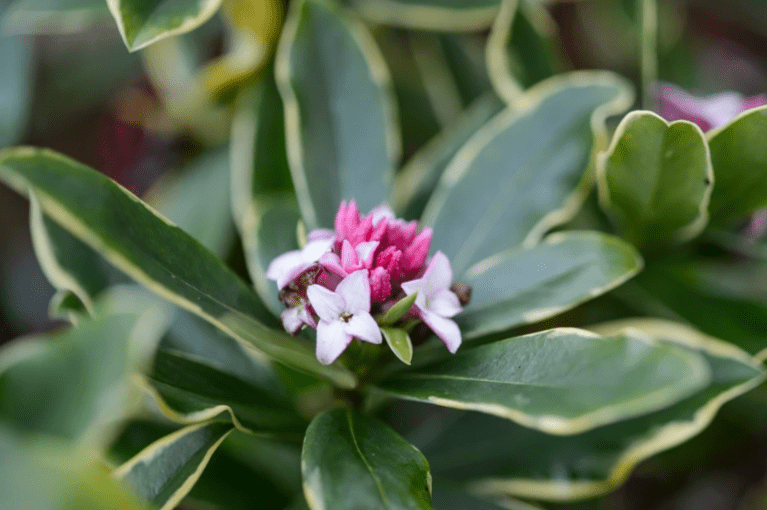
Overall, taking proactive measures to monitor and treat common pests and diseases affecting Daphne plants can help to maintain the health and beauty of these lovely shrubs. By opting for organic treatment options, you can protect the environment and preserve the natural balance of your garden.
Preventing and Managing Diseases
Signs of common diseases and how to treat or prevent them.
Daphne plants can be susceptible to a variety of common diseases, and it’s important to know how to identify and treat them. One common issue is pest infestation, which can be controlled using natural options that won’t harm beneficial insects or the plant itself. Regular monitoring of your plants for signs of pests is crucial, and taking action as soon as you notice any issues can help prevent the problem from escalating.
Another common disease that can affect Daphne plants is powdery mildew, a fungal disease that can impact the leaves and stems. To treat powdery mildew organically, a mixture of baking soda and water can be used as a spray to help control the spread of the fungus. Additionally, maintaining good air circulation around the plant and avoiding overhead watering can help prevent the development of powdery mildew.
Overall, taking proactive measures to monitor and treat common pests and diseases affecting Daphne plants can help maintain their health and beauty. By opting for organic treatment options, you can protect the environment and preserve the natural balance of your garden. Preventing and managing diseases is essential for keeping your Daphne plants thriving.
Winter Care for Daphne
Protecting Daphne in Cold Weather
Tips for winterizing your Daphne plants, including mulching and covering.
Winterizing your Daphne plants is crucial to ensure their survival during the cold weather. One important tip is to mulch around the base of the plant to help insulate the roots and protect them from freezing temperatures. You can use organic materials such as straw, leaves, or pine needles for this purpose. Additionally, covering your Daphne plants with a breathable fabric or burlap can provide extra protection from harsh winter conditions. It’s important to secure the covering to prevent it from blowing away in strong winds. This can help shield the plants from frost and cold winds, reducing the risk of damage to the foliage and stems. Keeping your Daphne plants well-watered throughout the winter is also important, as dehydration can make them more susceptible to frost damage. By following these tips, you can help your Daphne plants survive the winter and thrive when spring arrives.
Managing Frost Damage
Steps to take if your plant experiences frost damage.
If your plant experiences frost damage, there are several steps you can take to help it recover. One important tip is to mulch around the base of the plant to help insulate the roots and protect them from freezing temperatures. You can use organic materials such as straw, leaves, or pine needles for this purpose. Additionally, covering your Daphne plants with a breathable fabric or burlap can provide extra protection from harsh winter conditions. It’s important to secure the covering to prevent it from blowing away in strong winds. This can help shield the plants from frost and cold winds, reducing the risk of damage to the foliage and stems. Keeping your Daphne plants well-watered throughout the winter is also important, as dehydration can make them more susceptible to frost damage. By following these tips, you can help your Daphne plants survive the winter and thrive when spring arrives.
Propagating Daphne Plants
can be a rewarding and enjoyable experience. One method of propagating Daphne plants is through stem cuttings. This involves taking a cutting from a healthy, established plant and encouraging it to grow roots and develop into a new plant. To do this, start by selecting a healthy, non-flowering stem from the parent plant and carefully cut it at a 45-degree angle. Remove any lower leaves to expose the nodes on the stem, which will be the points where the roots will emerge. Dip the cut end of the stem in rooting hormone to encourage root growth, then plant the cutting in a well-draining potting mix. Keep the soil consistently moist and provide the cutting with indirect light until it begins to root and grow. With proper care and patience, the cutting will develop into a new Daphne plant. Another method of propagating Daphne plants is through division. This involves separating a mature plant into smaller sections, each with its own root system, to create new plants. To do this, carefully dig up the mature plant and use a sharp, clean tool to divide the root system into smaller sections. Replant each section in a well-prepared location and provide them with proper care to encourage growth. By using these methods, you can propagate Daphne plants and expand your garden with beautiful, fragrant additions.
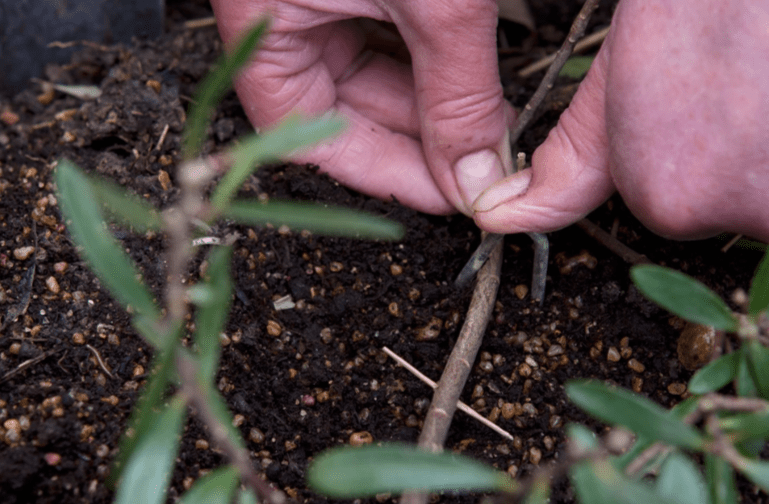
Conclusion
In conclusion, growing a healthy Daphne plant requires attention to detail and consistent care. It’s important to provide the right soil, sunlight, and water conditions for the plant to thrive. Additionally, regular pruning and pest control measures are essential for maintaining the health of the plant. By following these expert tips and advice, you can cultivate a beautiful and healthy Daphne plant in your garden.
Frequently asked questions And Answer
Daphne plants prefer well-draining, slightly acidic soil. Adding organic matter like compost can help improve soil drainage and fertility.
Daphne plants prefer partial shade to full sun, but they may struggle in hot, direct sunlight. It’s best to provide them with some protection from the intense afternoon sun.
Daphne plants prefer moist, but not waterlogged, soil. Water them regularly, especially during dry periods, but be careful not to overwater as this can lead to root rot.
Pruning daphne plants after they have finished flowering can help promote new growth and more blooms. Additionally, feeding them with a balanced fertilizer in the spring can encourage healthy growth and flowering.
Daphne plants can be susceptible to pests like aphids and scale insects, as well as diseases like root rot and powdery mildew. Regularly inspecting your plants and addressing any issues promptly can help prevent infestations and diseases.
Yes, daphne plants can be grown in containers, but it’s important to choose a large enough container with good drainage. Use a high-quality potting mix and ensure the plant receives the right amount of sunlight and water.
Yes, all parts of the daphne plant, including the berries, are toxic if ingested. It’s important to handle and plant them with care, especially if you have pets or small children.
Daphne plants can be propagated from semi-ripe cuttings in the summer or from seeds, although the latter method can be more challenging. It’s best to consult a gardening guide or expert for specific propagation techniques.
